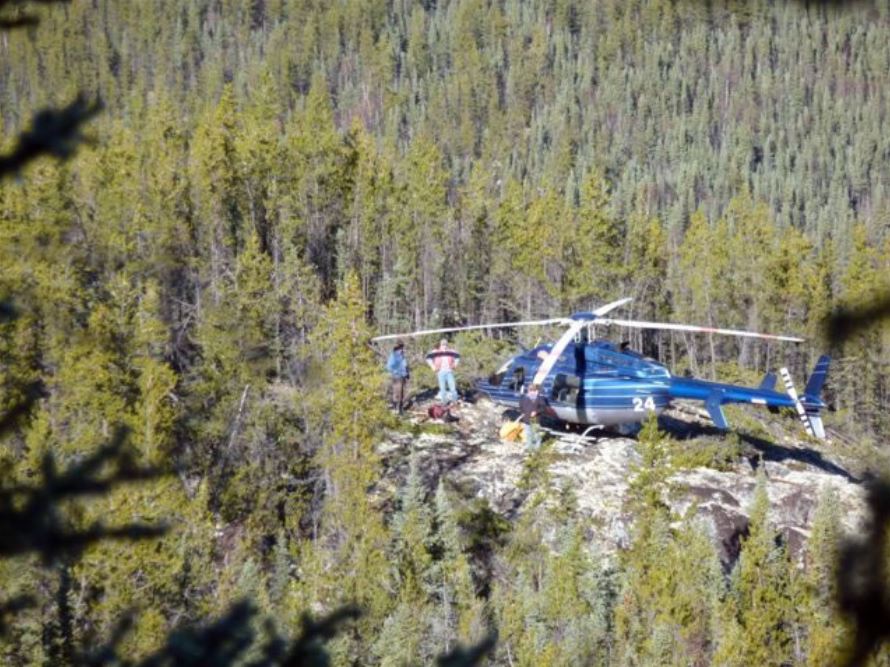Appia extends and confirms high-grade rare earth element mineralization at surface up to 49.64 weight % total reo in 5 locations on Alces Lake property, Northern Saskatchewan

Appia Energy Corp. (CSE:API, OTC:APAAF.US, Frankfurt:A0I.F, Munich:A0I.MU, Berlin:A0I.BE) is pleased to announce exceptional geochemical assay results from the ground prospecting and radiometric surveying program on the high-grade rare earth element (“REE”) plus uranium Alces Lake property, located 29 km north of the Athabasca Basin, northern Saskatchewan.
Geochemical assay highlights, reported as rare earth oxides (“REO”), from the following zones, which include
the new discoveries at Wilson, Danny, Hinge and NW Wilson, are as follows:
Ivan
- 49.64 weight % Total REO over 0.95 m
- 45.92 weight % Total REO over 1.85 m
Wilson
- 30.76 weight % Total REO in boulder
- 18.53 weight % Total REO over 2.7 m
- 9.07 weight % Total REO over 4.6 m including 20.94 weight % Total REO over 1.8 m
- 6.62 weight % Total REO over 1.8 m
Danny
- 13.63 weight % to 2.43 weight % Total REO outcrop grab samples
HingeÂ
- 8.73 weight % to 3.74 weight % Total REO in boulders
- 1.90 weight % over 1.5 m Total REO
NW Wilson
- 5.10 weight % to 1.68 weight % Total REO.in boulder and outcrop grab samples
The mineralization in the above zones have uniformly high concentrations of critical REEs, such as Neodymium (“Nd”) and Praseodymium (“Pr”), both of which account for about 20% and 5% of the Total REEs, respectively. Critical REEs are defined as those with scarce supply, in high demand, and criticality in much high-tech applications such as electric vehicles, cell phones, wind turbines and magnets. As of September 8th, 2017, both Nd and Pr prices were up 81% and 89% since the beginning of 2017 to $78.00/kg and $93.50/kg, respectively.
Mr. James Sykes, Vice-President, Exploration & Development, comments: “The assay results from the prospecting program showcase some of the highest-grade REE occurrences in the world. The Program was truly successful in that we:
- identified four new high-grade REE mineralized surface showings on the Property,
- showed continuity of the high-grade REE occurrences over several metres, where possible, and
- identified geological controls that will help us delineate and possibly connect some of the zones together in future programs.
We are very excited with these results and are planning an overburden stripping program followed by diamond drilling, and expect to start the work as soon as weather conditions are favourable in early May or June 2018″.
In addition to REEs, the following elements show positive linear correlations with increasing REO grades;
- uranium (U3O8): up to 0.20 weight % maximum and average 0.04 weight %,
- thorium (ThO2): up to 5.51 weight % maximum and average 1.09 weight %,
- scandium (Sc): up to 141 parts-per-million (“ppm”) maximum and average 28 ppm, and
- phosphorus pentoxide (P2O5): up to 31.4 weight % and average of 6.24 weight %.
Geochemical assay results and REO conversion factors can be found in Table 1. A map showing the locations of the samples is provided as Figure 1. The management of Appia considers geochemical assay results with greater than 2 weight % Total REO to be “high-grade”.
All samples with reported distances were removed from outcrops using a cut-off saw and hammer and chisel. The samples were cut one inch thick and deep in individual segments ranging from 0.18 m to 0.95 m along the reported distance. The sample distances and mineralization continuity were limited to visible and accessible outcrop exposures ie: all sampled outcrops either i) disappeared under thick vegetation cover, ii) dipped below the overburden, iii) were eroded along trend, or iv) the terrain proved to be too difficult to continue sampling.
Geochemical assay results were provided by Saskatchewan Research Council’s (“SRC”) Geoanalytical Laboratory, an ISO/IEC 17025:2005 (CAN-P-4E) certified laboratory in Saskatoon, SK, for multi-element and REE analysis using the ICPMS, Whole-Rock, Boron and Rare Earth Element Lab Packages. The Rare Earth Element analysis uses a lithium metaborate fusion to dissolve refractory minerals, such as monazite.
All geochemical results reported herein have passed rigorous internal QAQC review and compilation.
